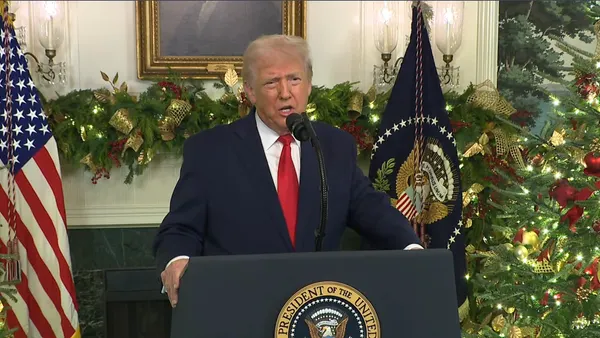Dive Brief:
- The U.S. Department of Education is advising states that request an extended spending deadline for American Rescue Plan funds to explain how doing so would help accelerate students' academic success, according to a letter issued to grantees last week.
- Specifically, the department encouraged the requests to explain investments in evidence-based strategies including increasing daily student attendance, providing high-quality tutoring, and expanding access to learning time before and after school and in the summer.
- Districts and school administrator organizations have raised concerns about complying with the spending deadline for the the last and largest amount of one-time COVID-19 emergency funding. The spending window, as well as challenges with supply chains and labor shortages, are driving that anxiety.
Dive Insight:
Approvals for ARP late liquidation would allow states and districts to spend the funds through March 28, 2026, as long as the money has been obligated by Sept. 30 of this year and relates to COVID recovery efforts, according to an updated FAQ the department issued along with the Jan. 9 letter to grantees.
In an example provided, the department said a district that is approved for a spending extension could contract with a tutoring service vendor prior to Sept. 30 of this year, and as long as that contract meets ARP allocation requirements, that district could receive those services and liquidate funds for up to 18 months past Sept. 30.
An extension, however, is not automatic, the department reminded grantees. States must submit the requests on behalf of themselves and districts. An explanation of how the funds will help with academic recovery and details of how the state supports expedited spending should be included, the department said.
The late liquidation request does not need to include details of the school systems' fiscal data, such as contracts and payments statements. But the state should be prepared to collect, review and maintain all supporting documents, the FAQ said. The Education Department has a template for submissions.
As for when the Education Department will respond to requests, the FAQ said the department is "committed to providing a prompt review."
The new guidance clarifies "the largest financial question in education," said Narric Rome, managing director of federal and state policy for Accelerate, a nonprofit that supports high-impact tutoring in public schools.
"It gives a strong boost to tutoring providers in states to see that they could be a part of the academic recovery taking place" after Sep. 30, Rome said.
Districts were required to reserve at least 20% of their ARP allocations to address pandemic-related learning loss.
While assessment data from some states show signs of year-over-year improvement, testing providers report lower-than-expected progress for marginalized students. Schools and policymakers are also working to combat chronic absenteeism.
A state or district may not enter into new contracts using ARP money after Sept. 30. If the funds aren't spent by the liquidation deadlines, the money reverts back to the federal government.
In addition to the ARP late liquidation requests, states are also able to request late liquidation for the first two allocations of COVID emergency funds under the Elementary and Secondary School Emergency Relief fund.
As of early November, nearly half of state education agencies requested and received spending extensions for ESSER I. Six states gained approvals to extend spending for ESSER II. In total, the extended spending was less than 1% of the funds available nationally for those two pandemic-related sources.













